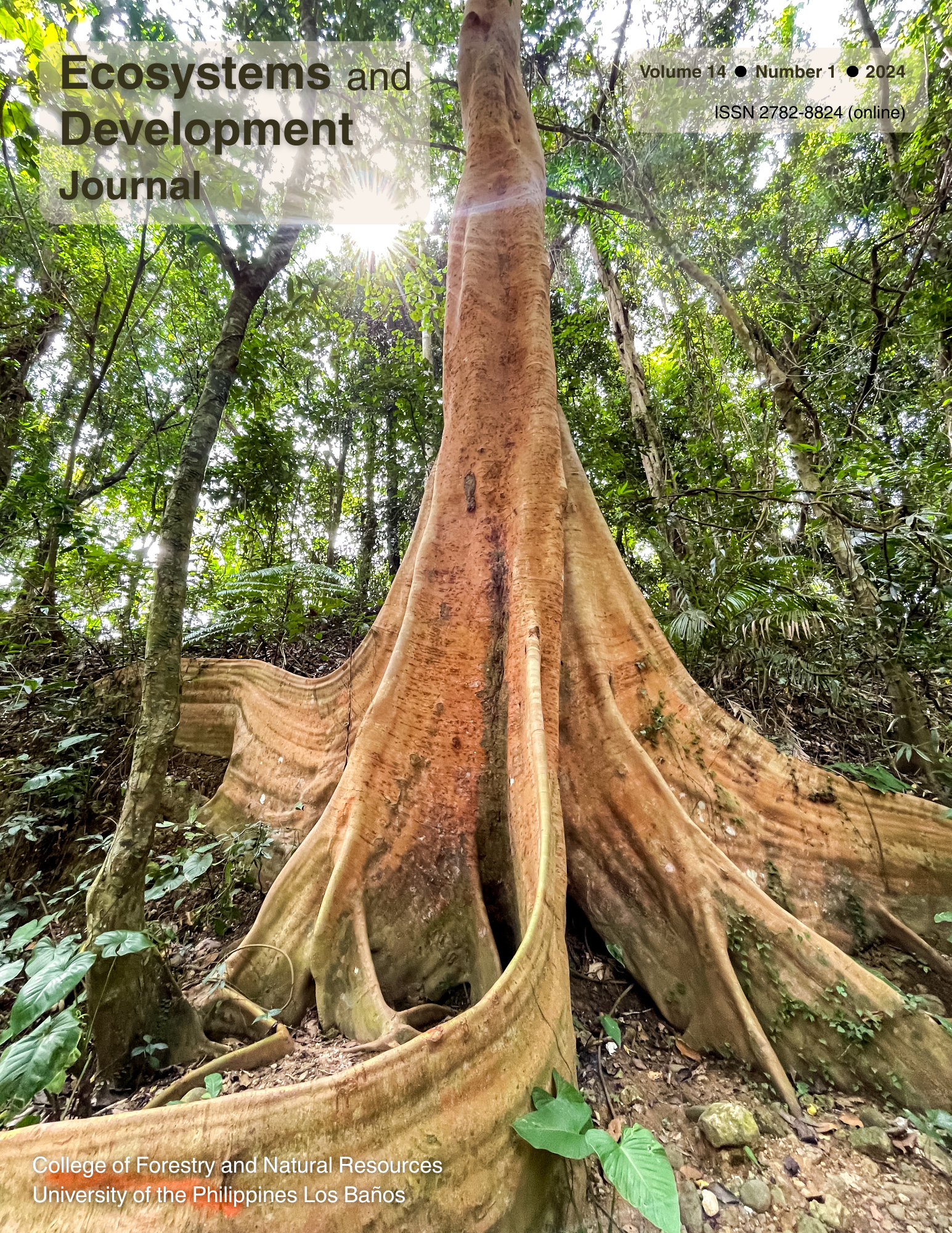Assessment of the physical properties and conditions of stacked harvested industrial tree plantation logs in selected sites in the Caraga Region, Philippines
Abstract
Caraga region boasts the nation's highest log production, primarily from Falcataria falcata (L.) or falcata, a key industrial tree plantation species (ITPS), and Gmelina arborea Roxb. (gmelina) and Acacia mangium Willd. (mangium). This study aimed to address the research gap regarding the condition of harvested logs in Caraga by determining the physical properties of the stacked harvested logs and documenting the landing site conditions. Sound and infested logs were taken as samples at each landing site. Information like species, stacking duration, extent of deterioration, biodeterioration agents, and log dimensions were determined. Gross features, as observed in the end-grain of the samples, were characterized, and the physical properties of the sample logs were determined. Identification of biodeterioration agents (termites and fungi) in the samples was also conducted. A notable disparity in physical properties was observed between the two sets of logs. Infested logs showed higher moisture content, lower density, and specific gravity than sound logs. The species of fungi and termites present in the logs are Auricularia cornea, Pycnoporus sanguineus, Phanerochaete chrysosporium, and Macrotermes gilvus, respectively. The findings underscore the significance of proper log storage at landing sites. This study supports the development of effective infestation mitigation strategies and improved practices in handling and stacking harvested logs.


